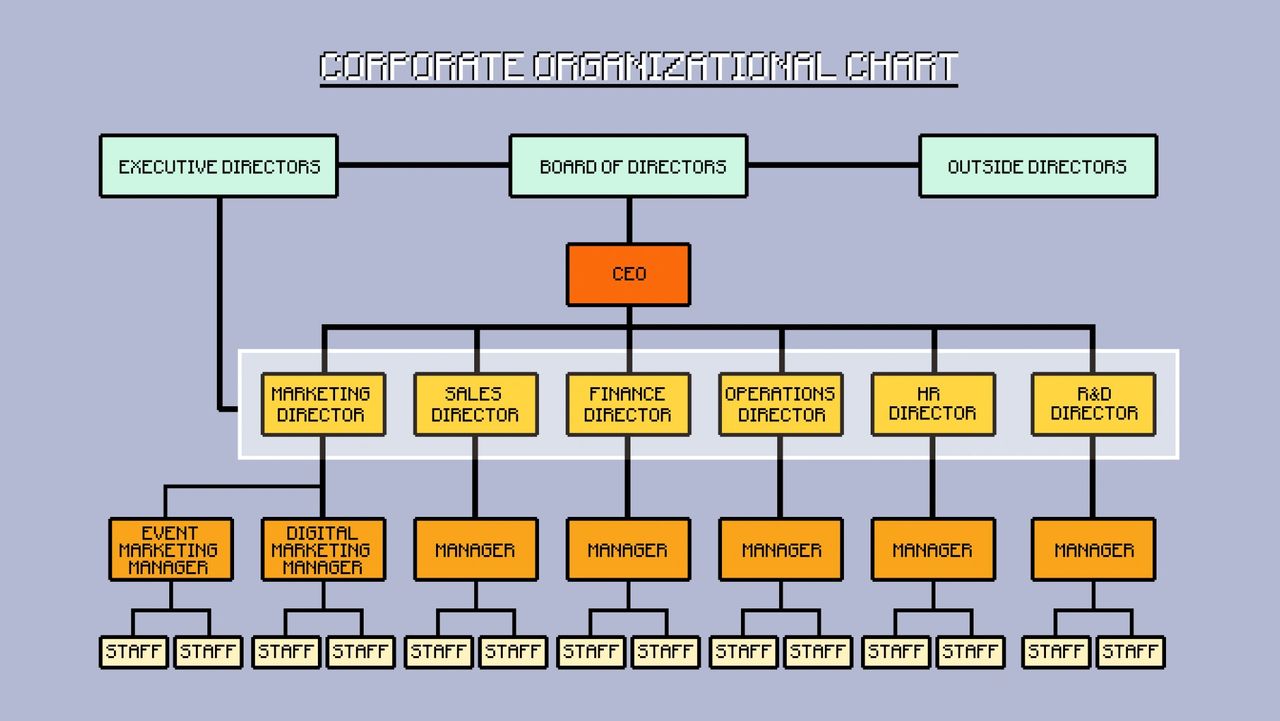A corporate hierarchy, commonly referred to as its “org chart”, or organizational chart, is a visual diagram that shows the structure of a company, illustrating the relationships and reporting hierarchies between different positions, departments, and employees.
The Traditional Corporate Org Chart
The traditional corporate hierarchy is a pyramidal structure that places a chief executive and business strategy at the top, workers and menial labor at the bottom, and series of managers in-between the many layers of the corporate hierarchy for improving departmental communication and collaboration. This business structure is often criticized for its lack of adaptability and flexibility. The sample corporate org chart below illustrates the typical corporate hierarchy, and takes into account all departmental roles – as well as the board of directors.

Vertical vs. Horizontal Corporate Roles
According to Gulick and Urwick: “The major arms of coordination are found… in the horizontal services which handle planning, budgeting, and personnel,” and “The major reason for bringing these services together… is not increased efficiency through specialization, but rather the development of tools of coordination.” – ‘Papers On The Science Of Administration’. To resolve the static processes and stagnant behaviors created by the traditional organizational structure, Gulick and Urwick suggest making a distinction between departments organized on the basis of purpose, or “vertical departments”, and those departments organized on the basis of process, or “horizontal departments”.
What Are The Vertical & Horizontal Corporate Roles?
There are six corporate departments and director roles in our sample hierarchy – Finance, Marketing, Sales, Human Resources, Operations, and Research & Development. Let’s position the process departments into a horizontal position relative to the other departments, which we will now call vertical, or purpose, departments. Process, or horizontal, departments are those departments common to all or to several departments. Because they are engaged in the same work tasks group-by-group, these processes and the staff of these horizontal departments may often be brought together. With this in mind, the Horizontal (Process) Departmental Roles become: Finance Director, Human Resources Director, and Operations Director; while the Vertical (Purpose) Departmental Roles become: Marketing Director, Research & Development Director, and Sales Director.
The Corporate Org Chart With Vertical & Horizontal Roles
Our new structure yields a corporate org chart as illustrated below. Note that the vertical and horizontal departments are labeled.

Thanks for reading!
